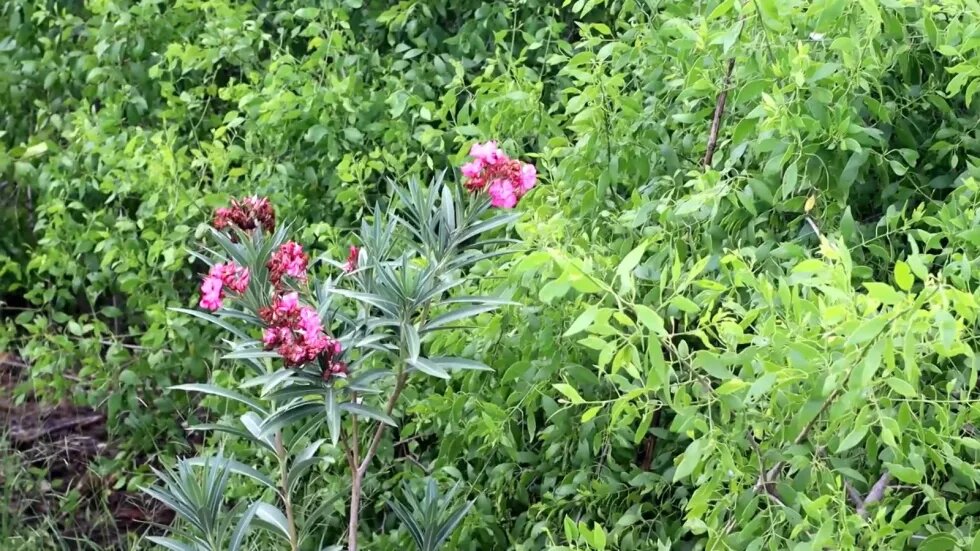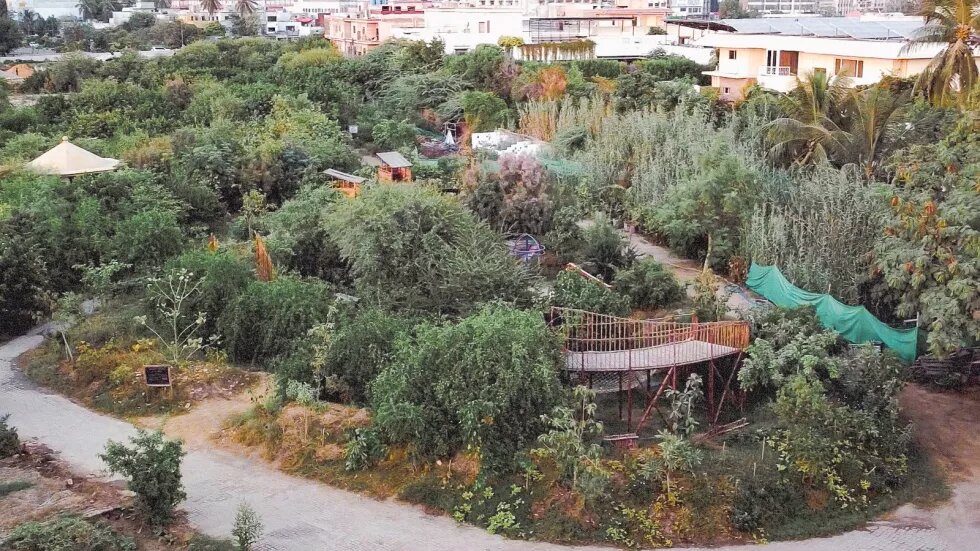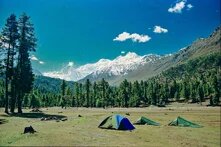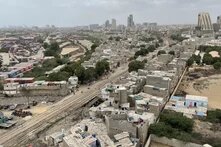
Can the Japanese technique of Miyawaki that creates dense forests with native plants be the solution to the environmental challenges that Pakistan’s largest city faces?

Murtaza Wahab, the mayor of Karachi, Pakistan’s largest city, has chosen to make a significant, but potentially questionable, decision by announcing the establishment of 300 new urban forests across the city, based on the Miyawaki, a Japanese methodology to create dense forests with native plants. While some citizens may be supportive, it is important to note that this initiative has been met with skepticism and concerns raised by environmental experts. They believe that the mayor's choice of the Miyawaki method appears to reflect his inspiration from a local engineer's successful individual effort, which gained substantial acclaim and media attention. However, to ensure genuine impact on a city-wide scale, it's crucial to seek expert guidance. Otherwise, this initiative may be perceived as a political manoeuver to garner media attention rather than a sincere effort to address urban challenges.
According to the most recent census statistics from 2023, Karachi has an official population of 16 million (unofficial estimates place the number at about 30 million). The city has recently experienced a number of natural disasters linked to climate change, including the disastrous 2015 heatwave and the urban flooding of 2020. According to environmentalists, all the existing trees and every new sapling planted in the city are valuable for the better environment of the city. However, the afforestation plan declared by the mayor, relying on the Miyawaki method, has left the experts with a multitude of reservations in this matter.
The primary concern lies in the fact that unless substantial and effective measures are taken to mitigate air pollution in Karachi and transition the construction industry toward more environmentally sustainable practices, the mere act of tree planting or the establishment of urban forests is unlikely to bring about significant improvements to the city's environment.
Environmentalists contend that for a city to foster a healthier environment, it should allocate at least 25 per cent of its area to green spaces. However, as per Junaidullah Khan, the director general of parks at the Karachi Metropolitan Corporation (KMC), various surveys indicate that Karachi's green cover barely reaches one per cent.
According to the Global Liveability Index for 2023, published by Economist Intelligence Unit (EIU) a sister arm of The Economist, Karachi has earned the unfortunate distinction of being ranked as the fifth least livable city on a global scale. This grim standing is attributed to a constellation of factors, including the city's poor air quality, deficient infrastructure, and a distressingly high crime rate.
Adding to Karachi's woes is the absence of a comprehensive master plan. The last master plan, prepared in 2005 during the tenure of former mayor Mustafa Kamal with a vision extending to 2020, faced rejection from the Sindh government. Since then, there has been no development of a master plan for Karachi. The current government has expressed intentions to formulate a master plan extending to 2050. However, apart from a few meetings, no tangible progress has been made on this front thus far. Karachi, serving as the capital of Sindh province, consequently continued its unchecked expansion, resulting in a breakdown of local governance and planning.
Environmental laws are not being effectively enforced, which has led to environmental degradation. For example, despite the existence of laws, there is no proper implementation to prevent the cutting of trees within city limits, resulting in the indiscriminate felling of trees.
Similarly, there is a glaring lack of adherence to building regulations, with multi-story structures being built up even on smaller plots. Consequently, the city has transformed into a concrete jungle, characterised by haphazard construction practices. These towering edifices, devoid of proper planning, have significantly impeded natural ventilation, exacerbated by a deficient transportation system that has led to air quality issues.
All these factors together have created enormous problems. Living in this metropolis has become more and more difficult as a result of climate change's negative effects, such as rising temperatures and urban flooding.
Heat wave havoc: Karachi's tragic summer of 2015
The scorching heat wave of 2015 left an indelible mark on the collective memory of Karachi's residents, serving as a wake-up call to environmental concerns. This devastating heat wave, which unfolded from 17 June to 21 June, claimed the lives of over two thousand individuals, with thousands more seeking medical attention. The temperature in Karachi began its relentless climb on 17 June, ultimately peaking at a searing 44.8 degrees Celsius on 20 June 20, a staggering 11.1 degrees Celsius above the norm. The heat index, at times, soared to a sweltering 50 degrees Celsius.
The predicament of the people worsened amidst a combination of scorching temperatures and a lack of essential amenities. The intense sun bore down relentlessly, with a noticeable absence of trees and shaded areas within the city where people could seek refuge. Additionally, the city lacked accessible water bodies or lakes where residents could find respite from the sweltering heat.
The timing of this ordeal coincided with the holy month of Ramadan, further complicating matters by hindering people's access to drinking water. With no relief from the relentless sun, the searing heat, coupled with an absence of essential resources, exacerbated the suffering of the populace.
Tragically, several people lost their lives due to the heat; some died on the streets, and others passed away in hospitals. Rizwan Edhi of Edhi Centre, the largest charitable NGO in Karachi, which also manages the city's largest mortuary, reported that a significant number of casualties were homeless individuals without any kind of shelter. They were forced to live on the unforgiving streets and beneath bridges. Beyond the homeless, the old city area bore a substantial share of the tragedy. Hospital records revealed that the majority of heat wave victims hailed from this densely populated neighbourhood, where cramped living quarters lacked adequate ventilation and intermittent electricity outages only compounded the crisis.
Karachi's first encounter with the urban heat island effect
In 2015, the citizens of Karachi were introduced to the concept of the “urban heat island effect”. Environmentalist Rafiul Haq emphasised that cement structures, which absorb heat, can transform buildings into virtual ovens. These heat-absorbing cement structures play a significant role in triggering heat waves within urban areas, resulting in what is commonly referred to as the heat island effect.
The old city area of Karachi, which is characterised by tall buildings and insufficient ventilation, was particularly affected by the heat island effect during the intense heat wave of 2015. This was a turning point when Karachi's residents began to earnestly address the city's environmental challenges and their underlying causes. Subsequently, there was a substantial surge in tree-planting initiatives across Karachi as the city's inhabitants became increasingly aware of the need to mitigate the Urban Heat Island Effect and combat rising temperatures.
Environmental transformation: The power of urban forests
A year after the 2015 heatwave in Karachi, an engineer, Shahzad Qureshi, introduced the concept of an ‘urban forest’ in the city, alongside his tree planting initiatives. This innovative approach, inspired by the Miyawaki method, developed by Japanese botanist Akira Miyawaki in the 1950s, involves densely planting three to five native tree species per square metre, fostering rapid forest growth compared to conventional methods. Qureshi initiated the urban forest in collaboration with an Indian expert Shubhendu Sharma who specialised in the Miyawaki method.
The urban forest in Clifton, South Karachi, covers three acres where Qureshi planted 38,000 saplings; many of those have matured into trees. The site features a sewage water filtration system, a vegetable garden providing year-round supply to the surrounding community, a fish pond, fruit trees and a waterfall. It has become a popular picnic spot for locals, with various small functions also being held there. Qureshi, although not a wildlife expert, has noticed a thriving ecosystem within the urban forest, including various bird species, four species of chameleons, five species of bees and a diamondback spider.
His dedication to environmental initiatives extends beyond the boundaries of Karachi as he has played a pivotal role in establishing 26 urban forests across Pakistan, with 20 of them located within the city. Some urban forests have been strategically located near mosques, utilising ablution water for irrigation. He believes these urban forests have a significant positive impact on Karachi's environment.
Debating urban forests: Traditional versus Miyawaki
Ecologist and mangroves expert Kanwal Nazim holds reservations about the Miyawaki Forest approach and instead advocates for traditional native tree planting methods. She says that because the trees are planted close together in the Miyawaki method, their trunks remain thin and the leaves do not look very fresh.
In contrast, when native trees are conventionally planted with a spacing of 20 by 20 feet, they develop wider trunks and larger canopies. Consequently, they are capable of absorbing 48 to 52 pounds of carbon dioxide per tree annually. When applying this approach, a total of 109 trees can be planted within a single acre. By multiplying these 109 trees by the carbon absorption rate of 48 pounds, we find that an acre can absorb 5,232 pounds of carbon dioxide each year. This is equivalent to 2.5 to 2.6 tonnes annually.
Environmentalist Rafiul Haque also questions the suitability of the Miyawaki urban forest for Karachi. He highlights the widespread issue of unauthorised tree removal in the city, with even shopkeepers felling mature trees to enhance the visibility of their shops, often without repercussions from the authorities. In such a context, he questions who would safeguard these urban forests. Additionally, timber logging remains prevalent, posing a substantial threat to entire forests as opposed to individual trees. Furthermore, concerns are raised regarding potential "human-tree conflict," including complications related to sewerage systems and security concerns. Haque suggests that peri-urban forests on the city's outskirts would be a more viable approach to enhancing Karachi's green cover. He also points out the logistical challenges of conducting an audit for the Miyawaki urban forest, raising doubts about the cost-effectiveness of large-scale urban forest initiatives financed by public funds.
Junaidullah Khan explains that according to the Sindh Act 179/ 2A, unauthorised cutting of any tree is prohibited. Furthermore, if a tree needs to be removed for a valid reason and with the permission of the relevant institution, the law mandates that five new trees must be planted in place of each one that is removed.
Improving air quality: Finding solutions
In the face of deteriorating air quality, the question arises: What are the viable solutions? While experts acknowledge the positive role of trees in mitigating air pollution by absorbing carbon dioxide, the dire air quality situation in Karachi demands a more comprehensive approach.
To emphasise the severity of Karachi's air quality concerns in relation to human health, it is pertinent to refer to a report issued by the World Health Organisation (WHO). According to WHO's Global Health Observatory, Pakistan bears a heavy burden, with approximately 200 deaths per 100,000 population attributed to environmental factors. The World Bank estimates an annual toll of 22,000 premature adult deaths in Pakistan due to air pollution.
Further insights emerge from a research conducted by professor Zafar Fatemi's team at the Department of Environment and Community Health at Aga Khan University, from October 2009 to December 2010. This study reveals that Karachi's air quality is severely hazardous to human health. The collected data highlights the presence of high concentrations of fine particles, including sulphur, zinc, carbon, lead, chromium and iron in Karachi's atmosphere. Shockingly, levels of particulate matter (PM 2.5) and certain other metals surpass the safe limits established by the World Health Organisation, which should not exceed 25 micrograms per cubic meter. For instance, PM 2.5 levels soar to 68 micrograms per cubic meter in an area of the old city named Garden.
Fatemi places the lion's share of the blame for Karachi's air pollution on the transportation sector, encompassing everything from trucks to motorcycles. The sector contributes 59 per cent of the pollution. This groundbreaking research by Fatemi was published in the Science of Total Environment on 10 April 2023.
Environmental advocate Yasir Hussain, operating under his organisation Darya Lab, has installed 25 to 30 air pollution sensors across Karachi to gauge the extent of air pollution and its impact. According to the data gathered from various locations within the city, an astonishing 60 per cent of Karachi's pollution is attributed to gas and PM 2.5 emissions from the combustion of petrol and diesel in vehicles.
Hussain underscores the need for an expanded sensor network to provide comprehensive data and questions why Sindh Environmental Protection Agency (SEPA), the government body responsible for environmental oversight, hasn't taken more initiative. SEPA, on the other hand, cites budgetary constraints as the primary obstacle.
Regarding urban forests and tree planting, Hussain emphasises the need for a dual approach to transform Karachi into a habitable city. In addition to tree-planting initiatives aimed at improving air quality, the city must also invest in efficient public transportation systems to significantly reduce the pollution burden, which currently accounts for around 60 per cent.
Shahzad Qureshi, although not conducting a formal study, has noticed a noteworthy temperature difference of six to seven degrees between urban forests and the surrounding areas during different times of the day. These green spaces undeniably contribute to temperature reduction in the city.
Sustainability of the construction industry: Where do we draw the line?
Environmental experts have linked the escalating temperatures in Karachi to the prevalence of concrete structures. Research indicates that materials with darker hues, such as cement, sand, iron, dark-tinted glass and coal tar roads, possess a higher heat-absorption capacity.
In 2019, a study was conducted by professor Zafar Iqbal Shams, associated with the Institute of Environmental Studies at Karachi University. Titled "Assessment of Thermal Behaviour of Various Urban Surfaces and the Urban Heat Island Effect-2019," the study scrutinised black, red, white, green and light yellow surfaces, and established a direct temperature correlation among different colours and construction materials. Unsurprisingly, black ranked as the hottest surface due to its superior heat absorption capability. Red was slightly outperformed by black. Temperature progressively decreased with lighter colours, with white registering as the coolest surface, signifying its minimal heat absorption.
It's important to note that the majority of construction materials, such as cement, concrete, iron and coal tar for roads are inherently dark in colour, thus predisposed to heat absorption. The same study also highlighted that densely populated urban areas, characterised by towering interconnected structures, experienced temperatures at least 10 degrees higher than their counterparts, perpetuating the heat island effect.
Prominent architect and urban planner Farhan Anwar emphasises that the elimination of cement, iron and glass from construction practices can make every home environmentally friendly and cost-effective. However, this transition necessitates the formulation of a comprehensive national construction policy. Such a policy would encompass alternatives with reduced gas emissions, aligning with the global trend toward sustainable construction. Commonly adopted alternatives worldwide include clay, lime, bamboo, coal ash and hemp fiber.
To what extent can the construction industry adopt eco-friendliness? Why aren't initiatives like rainwater harvesting, rooftop gardens, vertical gardens and family parks commonplace in construction projects? In response, Altaf Tai, chairman of Karachi Builders and Developers Association, points out that the existing government regulations make it difficult for builders to compete in the market while implementing such practices, as they increase project costs. Unless the government mandates these regulations industry-wide, it remains challenging for individual builders to enforce them.
Experts advocate for a holistic approach led by mayor Wahab to address Karachi's environmental and climate change issues comprehensively. Only by considering all these factors can the city aspire to become a more sustainable and livable urban centre.




